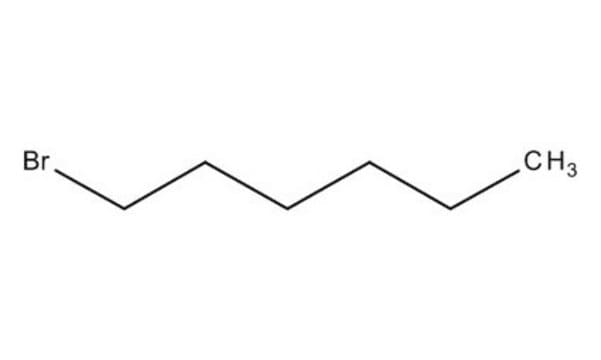398276
Diisopropyl ether
contains either BHT or hydroquinone as stabilizer, ACS reagent, ≥99.0%
Synonym(s):
Isopropyl ether
About This Item
Recommended Products
grade
ACS reagent
Quality Level
vapor density
3.5 (vs air)
vapor pressure
120 mmHg ( 20 °C)
Assay
≥99.0%
form
liquid
autoignition temp.
827 °F
contains
either BHT or hydroquinone as stabilizer
expl. lim.
1-21 %, 100 °F
impurities
≤0.0007 meq/g Titr. acid
≤0.05% Peroxide (as C6H14O2)
evapn. residue
≤0.01%
color
APHA: ≤25
refractive index
n20/D 1.367 (lit.)
bp
68-69 °C (lit.)
mp
−85 °C (lit.)
density
0.725 g/mL at 25 °C (lit.)
SMILES string
CC(C)OC(C)C
InChI
1S/C6H14O/c1-5(2)7-6(3)4/h5-6H,1-4H3
InChI key
ZAFNJMIOTHYJRJ-UHFFFAOYSA-N
Looking for similar products? Visit Product Comparison Guide
General description
Application
- Resolution of secondary alcohols.
- Enantioselective acylation of 1-phenethylamine.
- Synthesis of aliphatic and aromatic cyanohydrins.
Signal Word
Danger
Hazard Statements
Precautionary Statements
Hazard Classifications
Flam. Liq. 2 - STOT SE 3
Target Organs
Central nervous system
Supplementary Hazards
Storage Class Code
3 - Flammable liquids
WGK
WGK 1
Flash Point(F)
-20.2 °F - closed cup
Flash Point(C)
-29 °C - closed cup
Certificates of Analysis (COA)
Search for Certificates of Analysis (COA) by entering the products Lot/Batch Number. Lot and Batch Numbers can be found on a product’s label following the words ‘Lot’ or ‘Batch’.
Already Own This Product?
Find documentation for the products that you have recently purchased in the Document Library.
Customers Also Viewed
Protocols
A guide to create solvent systems used for the thin-layer chromatography assay of Novabiochem products.
A guide to create solvent systems used for the thin-layer chromatography assay of Novabiochem products.
A guide to create solvent systems used for the thin-layer chromatography assay of Novabiochem products.
A guide to create solvent systems used for the thin-layer chromatography assay of Novabiochem products.
Our team of scientists has experience in all areas of research including Life Science, Material Science, Chemical Synthesis, Chromatography, Analytical and many others.
Contact Technical Service










